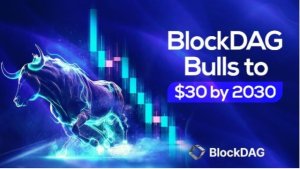Why Self-Custody is the Key to Secure Crypto Trading
Crypto trading is fast gaining popularity; as of writing, the total market capitalization stands at $2.3 trillion, double what it was at the onset of the 2021 bull market.

But while this growth is impressive, most of the daily traded volume is still concentrated on centralized exchanges. For context, Binance, which is the largest centralized exchange (CEX), enjoys 101 million monthly visits, while Uniswap, the leading decentralized exchange (DEX), currently stands at 14 million visits.
Of course, there are several fundamental reasons why crypto natives favor CEXs over DEXs, most notably the ease of onboarding and UX.
However, operating on a CEX comes with a significant amount of risk. This is because centralized crypto platforms provide their users with custodial wallets; technically, they retain control over users’ funds as will be explained in the next section.
In contrast, decentralized exchanges (DEXs), including those within the niche crypto derivative market like Apex Pro, not only grant users full control over their funds but also offer the flexibility to utilize a diverse array of non-custodial wallets, such as MetaMask, OKX Wallet, and Trust, among others.
Not Your Keys, Not Your Crypto
This old crypto saying is often used as a caution for users who entrust their digital assets with third-party custodians.
By design, the custodial wallets issued by CEXs have a public and private key. The former is typically the address where a user can receive digital assets; let’s say BTC is transferred to a Coinbase user’s account, the receiving address is technically the public key.
More importantly, the public key is linked to a private key, which in simpler terms acts as the password. Consequently, anyone with access to the private keys can approve transactions or transfers.
The caveat with custodial wallets is that the issuing authority retains control of the private key; this explains why CEXs can take a cut of the transaction fees from their users’ wallets without requiring any approval from the account owner.
Case Study of Failed Custodial Exchanges
There have been several instances where reliance on custodial wallets has proven catastrophic for crypto owners who had their funds stored on centralized exchanges.
The earliest significant incident is the 2014 Mt Gox hack, which saw victims lose around 850,000 BTC. To date, the victims of this hack are still pursuing repayments, with the total value of the compromised BTC now at $51.8 billion according to prevailing market prices.
More recently, the infamous crypto exchange FTX went under with over $8 billion in client funds. What’s unique about the FTX case is that it represents a classic case of mismanagement. The top brass, led by SBF, had access to the private keys required to move clients’ funds from their accounts.
According to reports, SBF alongside other officials were able to siphon funds into FTX’s sister company Alameda, which they used to buy multiple investments, some of which went belly up while others were largely illiquid. The time of reckoning came when users demanded to withdraw a whopping $6 billion within a span of 72 hours, forcing FTX to file for bankruptcy.
The FTX case is almost similar to Canada’s Quadriga CX exchange, whose co-founder and CEO Gerald Cotten passed away in 2019, leaving users stranded as he was the ‘only’ one with the exchange’s private keys. While this narrative was convincing to some extent, further investigations by Canadian authorities revealed Cotten had already misused clients’ funds to the tune of $115 million.
Self-Custody DEXs For Crypto Trading
Evidently, there is no crypto exchange that is currently too big to fail. In other words, most crypto traders or investors would be better off trading on DEXs, which allow them to retain full custody and control over their funds.
So, what are some of the DEXs where crypto natives can achieve this type of freedom?
As mentioned in the introduction, Uniswap is one of the leading options. This DEX has amassed a strong user base since its launch in 2018, further gaining popularity during the DeFi summer of 2020. Notably, Uniswap’s total volumes recently crossed the $2 trillion mark, with daily volumes hitting a record high of $3 billion.
For more sophisticated traders looking to capitalize on the derivative market, Apex Pro is one of the DEXs that features a non-custodial trading platform offering permissionless access to cross-margined perpetual contracts. According to Coingecko, this DEX’s 24-hour trading volume is currently at $247 million, while the open interest stands at $46 million.
Ecosystem-oriented non-custodial DEXs such as Orca and Jupiter have also seen a notable uptick in the past few months, thanks to the meme coin craze on Solana. The latter is currently the second leading DEX with a market share of 13.1% and over 800 listed pairs.
Conclusion
Crypto is bound to scale into a larger ecosystem with increased activity in the coming years. However, as this adoption unfolds, it would be counterintuitive to continue relying on centralized platforms to provide custody solutions. Embracing self-custody is the only true way to achieve crypto’s ultimate purpose: a financial and monetary ecosystem where users have a say not only in governance but also in exerting direct control over their funds at any time.









